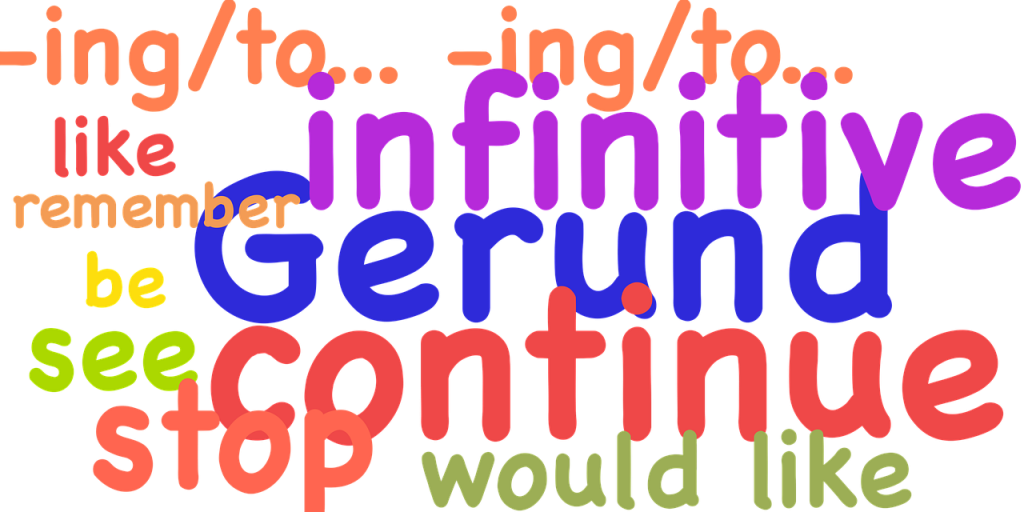Table of Contents
Verbs
Verbs are the words in a very sentence that describe the action of a sentence or that introduces the condition or state of somebody or one thing within the sentence.
Action: Anna throws the ball.
Introduction of a condition: Trent is very sick.
Transitive verbs
There are many action verbs. Those that will have an immediate object are usually known as transitive verbs. Here is a list of some commonly used transitive verbs. Note that they’ll be used with a direct object.
| Transitive Verbs | Used in a Sentence |
| Buy | He buys a newspaper. |
| Carry | I am carrying a child. |
| Find | Can you find the book? |
| Help | She helps us. |
| Like | I don’t like cabbage. |
| Lose | Don’t lose your money. |
| Read | She is reading a book. |
| Pull | The dentist pulled the tooth. |
| Push | The boy pushes the cart. |
| Sell | I am selling my car. |
| Speak | Father speaks Spanish. |
| Write | We are writing some postcards. |
| Understand | Do you understand me? |
AUXILIARY VERBS – ENGLISH GRAMMAR
Intransitive verbs
Intransitive verbs aren’t followed by a direct object. They usually show a movement to an area and are typically followed by a phrase. Following is a list of some commonly used intransitive verbs:
| Intransitive Verbs | Used in a Sentence |
| Come | Can you come to the party? |
| Crawl | The baby crawls on the floor. |
| Drive | We are driving fast. |
| Fly | I flew here from Paris. |
| Go | Are you going home? |
| Hurry | We hurry to the window. |
| Jump | Peter jumps from the roof. |
| Ride | I am riding in his car. |
| Run | The girls run past the school. |
| Sail | We are sailing to Europe. |
| Travel | Do you want to travel with us? |
| Walk | I walk out of the theater. |
Linking verbs.
Still, alternative verbs introduce the condition or state of somebody or of someone. {They do |they are doing} not take a direct object and are most frequently followed by an adjective. These verbs are usually called linking verbs. Here are some unremarkably used linking verbs:
| Linking Verbs | Used in a Sentence |
| Appear | The boy appears quite well. |
| Taste | The popcorn tastes salty. |
| Becomes | The weather becomes bad. |
| Feel | It feels hot. |
| Grow | The dog is growing weak. |
| Look | She looks unhappy. |
| Seem | The boats seems too small for you. |
| Smell | The pizza smells good. |
| Sound | The music sounds awful. |
Careful! Some of the linking verbs have a second usage. They can be used as transitive verbs. Look at these examples:
Linking Verb: His skin feels hot. (hot adjective)
Transitive Verb: He feels a sharp pain. (a sharp pain direct object)
Linking Verb: The sky grows cloudy. (adjective)
Transitive Verb: We grow vegetables. (direct object)
Linking Verb: That smells beautiful. (adjective)
Transitive Verb: She smells the flowers. (direct object)
Linking Verb: My coffee tastes bitter. (adjective)
Transitive Verb: Risa tasted the ice cream. (direct object)
You can identify linking verb by substituting am, is, or are for the verb. If the sentence makes sense with the substitution, it is a linking verb. If it does not make sense, it is a transitive verb. Some examples:
It feels cold. (It is cold.) This makes sense. Linking Verb
He feels her pulse. (He is her pulse.) This makes no sense. Transitive Verb
They smell nice. (They are nice.) This makes sense. Linking Verb
We smell coffee. (We are coffee.) This makes no sense. Transitive Verb
WHAT ARE NOUNS, PRONOUNS, AND PERSONAL PRONOUNS
This post contains the content of book English Grammar for ESL Learners below is the link of complete book practice_makes_perfect__english_grammar_for_esl_learners
